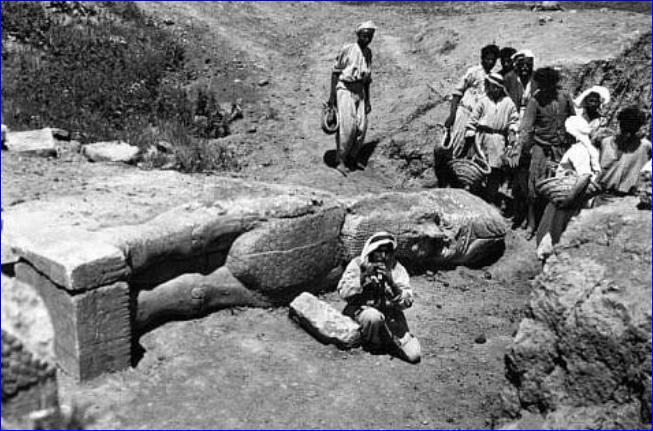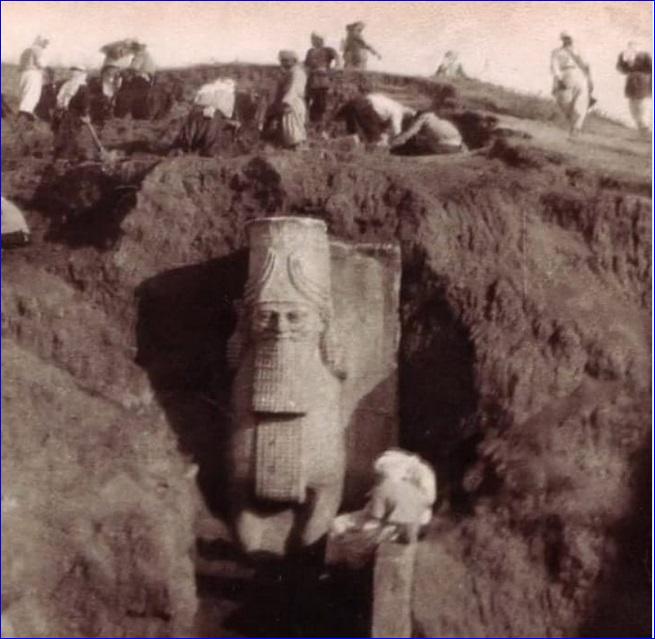


Today Nineveh is located on the outskirts of the city of Mosul in modern-day northern Iraq. It is located on the eastern bank of the Tigris River. While it is not advisable to visit the ruins today, many artifacts can be seen in museums around the world like the British Museum in London.
History Of Nineveh
Nineveh is famous from the Bible and is recorded as having conquered the Northern Kingdom of Israel deporting them into exile where they became the famous "Ten Lost Tribes." It is also famous as the Sin City of the Bible where Jonah was commissioned to go and preach to them, he refused and fled from God only to be swallowed by the great fish before giving up and going and preaching to them.
The mighty city's period of glory came to an end around 612 BC when it began its long decline. At this time the mighty Neo-Assyrian Empire fractured and descended into a bitter period of civil war.
Then it was sacked by a coalition of other peoples including the Babylonians, Medes, Persians, Scythians, and Cimmerians. The Babylonians broke free from years of domination by Assyria. Babylon rapidly grew to become the world's preeminent city and empire - the ruins of which can be seen today.
The city of Nineveh continued although not in its former glory but by the Middle Ages, it had passed into oblivion.
Related: Brief History of Assyrians
Today there are two main tells (tells are mound-ruins of successive cities built on top of each other and then buried creating a mound). The tells are Tell Kuyunjiq and Tell Nabi Yunus ("Nabi" is Arabic For "Prophet" and "Yunus" is Arabic for "Jonah" - the prophet with the unfortunate fish-belly accommodation for three nights).
The ruins of Nineveh remained buried until they were uncovered and excavated by Austin Henry Layard in 1846 and 1847. All the major finds have come from the Kuyunjik mound while the Nebi Yunus mound remains untouched because of an Islamic shrine to the prophet and a cemetery there.

Many Assyrian sculptures and other artifacts have been excavated here and are now located in museums around the world. Several palaces were also excavated here including the first few chambers of the Palace of Sennacherib. According to a deep sounding by Max Mallowan, there is evidence of habitation as early as the 6th millennium BC.
Related: Assyrians: Frequently Asked Questions
Looting And Destruction of The Artifacts and Ruins
In 2014 ISIS destroyed the shrine on Nebi Yunus and caused severe damage to some of the site's priceless artifacts. They even destroyed the impressive restored Adad Gate in 2016. Read more about the destruction of the artifacts of Nineveh on the BBC.
A silver lining is that following the liberation of Mosul in 2018, the group had built tunnels under Tell Nebi Yunus that revealed a 3000-year-old palace as well as a pair of reliefs each showing a row of women. There were also reliefs of Lamassu (an Assyrian protective deity).
Today the ruins of Nineveh are in danger of encroaching urban sprawl and being damaged by vandalism. Today there is not much to see, and much of what was excavated has been destroyed or illegally sold off on the antiquities market. Visiting The Site
While intrepid travelers may want to explore this historic site, it is located in a very unstable part of Iraq and there are travel warnings about visiting. See current government travel advisories before going - also the site is not well maintained and there is little tourist infrastructure in the war-torn nation. As of the time of writing the US has issued a Level 4 "Do Not Travel" warning for Iraq.
The British Museum
One can see a number of ancient Assyrian artifacts at the British Museum in London (that is home to some of the world's most priceless treasures). In Room 9 of the museum, one can see many of the stone panels that once adorned the rooms and courtyards of ancient King Sennacherib's Neo-Assyrian Southwest Palace.
The panels depict a variety of scenes, including the transport of huge sculptures of human-headed winged bulls (lamassu) that weigh up to 30 tons and were intended for the main entrances to the palace.
Here one can learn about the ancient quarrying and transport techniques in addition to Sennacherib's keen interest in his building projects. One can also see panels depicting his military campaigns.

or register to post a comment.